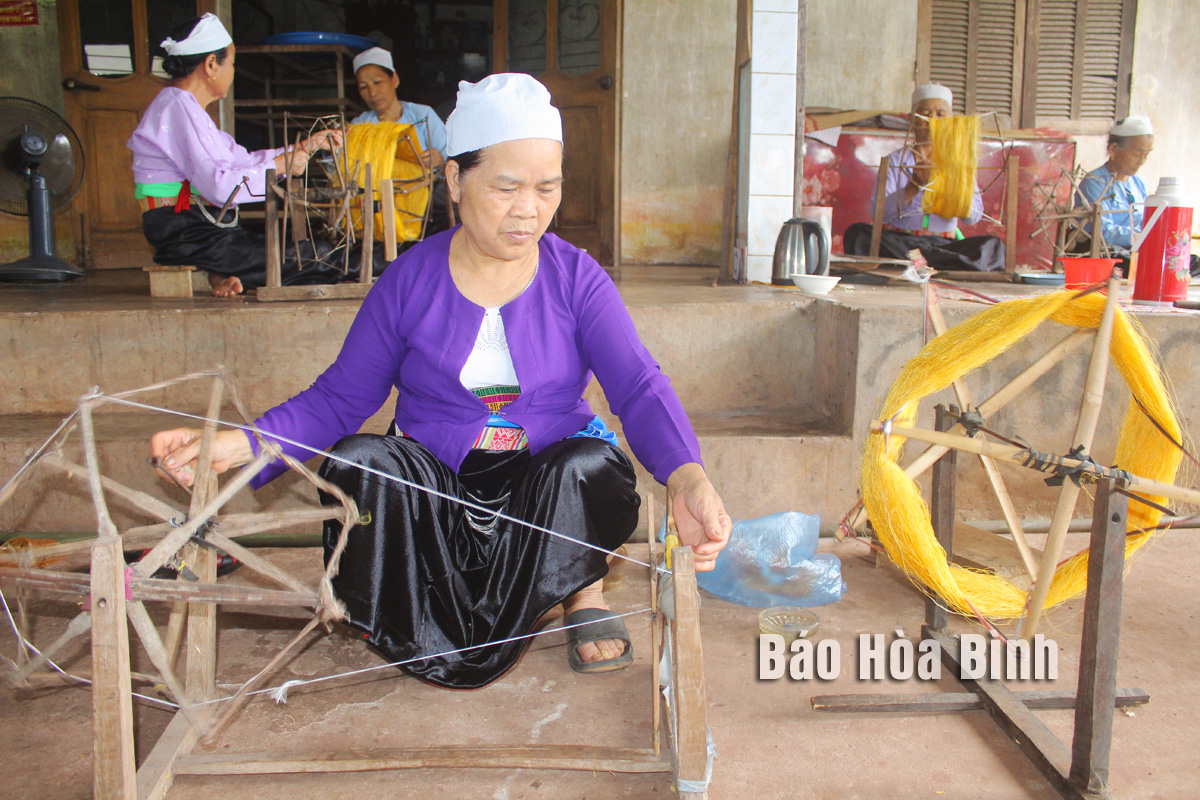



The residents of Com Hamlet, Dong Lai Commune (Tan Lac), have been developing their traditional brocade weaving craft, contributing to better livelihoods.
Currently, the rural handicrafts in the province are developing in three main forms: the individual household production, the handicraft cooperatives, and private enterprises. The rural handicrafts produces a diverse range of products, mainly utilizing locally available raw materials. Besides the traditional crafts such as brocade weaving, rice wine brewing, bamboo and rattan weaving, and making ethnic Can wine, there are also other products such as broom making, making the rural handicraft materials, small-scale mechanical production, ornamental stone crafting, wooden furniture, and ceramics.
According to the Department of Agriculture and Environment, the province's rural handicraft industry has gradually shifted from small-scale, traditional production to a more commercial-oriented approach with high-quality products. As a result, these products not only serve the local markets but they have also expanded to wider regional and national markets. The rural handicraft sector has played a key role in job creation, labor restructuring in the rural areas, and improving the incomes for the rural people.
Com Hamlet, Dong Lai Commune (Tan Lac), was recognized as a traditional brocade weaving village in 2017. Since then, Muong ethnic people have not only preserved their weaving heritage but they have also expanded and developed it. The establishment of Dong Lai Traditional Brocade Weaving and General Services Cooperative is a testament to this progress. A visit to the village reveals that every day, the local artisans gather at the cooperative to weave their products.
Mrs. Bui Thi Tuom (75 years old) says: "Thanks to the cooperative, we have restored our looms and preserved the traditional weaving craft. Every day, we spin and weave together, not only keeping active but also earning extra income”.
Mr. Bui Van Khoa, the Director of the Cooperative, states that if the production remains stable, each cooperative’s employee can earn between 3 to 4 million VND per month. Recently, the cooperative has also revived mulberry cultivation and silkworm farming to ensure a steady supply of raw materials. However, the collective still has challenges, such as the lack of a proper workshop and the absence of spinning equipment, requiring them to send cocoons to Thanh Hoa for preliminary processing. As a result, the brocade weavers in Com Hamlet hope for the financial support, the workshop facilities, and better market connections to ensure the sustainable development of their craft.
According to the Department of Agriculture and Environment, among the 11 recognized craft villages in the province, there are 2 specializing in processed products, 1 in traditional bamboo and rattan weaving, 2 in handmade crafts, and 6 in conventional brocade weaving. Over the years, both the central and provincial governments have implemented various policies to develop the rural handicrafts, helping the craft villages recover and expand production. Currently, the province’s rural handicraft sector generates an annual revenue of 1.324 trillion VND and provides jobs for over 35,000 workers.
However, the production scale of most craft villages remains small, primarily household-based and fragmented, failing to attract the significant local labor. The product consumption is still limited, relying mainly on the domestic markets. The production techniques remain largely manual, with the outdated equipment and minimal investment in innovation for improving the product design and quality. Additionally, marketing and promotion efforts are inadequate, and the potential of tourism as a channel for promoting and selling traditional handicrafts has not been fully utilized.
To address these challenges, the province is implementing a range of comprehensive solutions. In the short term, the efforts are focused on improving the product designs, enhancing quality, developing brand identities, and promoting trade. At the same time, there is a continued emphasis on preserving and expanding traditional craft villages with strong potential, supporting the establishment of centralized raw material zones, and increasing the value of rural handicraft production in a sustainable manner.